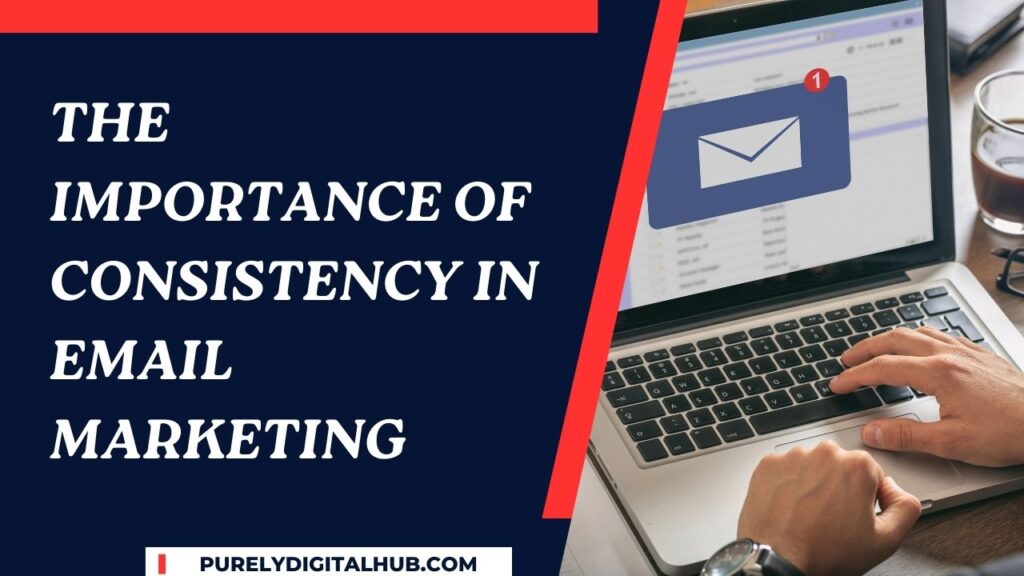Email marketing remains one of the most effective tools for engaging with customers, driving conversions, and fostering brand loyalty. However, the key to success in email marketing isn’t just the content or the design—it’s consistency. Regular, predictable, and well-crafted emails build trust with your audience and ensure your message resonates. This guide explores why consistency matters in email marketing and how to achieve it effectively.
1. Building Trust and Reliability Among Subscribers
Consistency in email marketing establishes a sense of reliability. When subscribers know they can expect valuable content at a regular interval, they are more likely to open and engage with your emails.
- Predictability: A consistent schedule makes your audience anticipate your emails, creating a habit.
- Professionalism: Regular, high-quality emails reflect a well-organized and trustworthy brand.
- Long-Term Relationships: Consistency fosters a stronger connection, encouraging loyalty and repeat interactions.
| Benefit | Impact on Subscribers |
|---|---|
| Predictability | Builds anticipation |
| Professionalism | Enhances brand credibility |
| Long-Term Relationships | Encourages loyalty |
2. Enhancing Brand Recognition Through Regular Communication
Frequent, consistent emails reinforce your brand identity. When your audience regularly interacts with your content, they’re more likely to remember your brand when making purchasing decisions.
- Visual Identity: Use consistent templates, colors, and logos with a 3D logo maker.
- Voice and Tone: Maintain a uniform tone that aligns with your brand values.
- Message Alignment: Ensure all emails contribute to your broader marketing objectives.
For example, a weekly newsletter with a branded template strengthens visual recognition, making your emails instantly identifiable.
3. Driving Engagement with Predictable Schedules
Timing is crucial in email marketing. A predictable schedule ensures your emails reach subscribers when they are most likely to engage. Key strategies include:
- Testing Send Times: Analyze when your audience is most active and schedule emails accordingly.
- Weekly or Monthly Updates: Commit to a schedule, such as every Tuesday or the first day of the month.
- Event-Based Emails: Align campaigns with seasonal promotions or industry events.
| Frequency Type | Example |
| Weekly Updates | “Top Deals This Week” on Mondays |
| Monthly Newsletters | “What’s New This Month” |
| Event-Based Campaigns | Holiday sale promotions |
4. Improving Metrics with Consistent Email Practices
Consistency impacts key performance metrics in email marketing:
- Open Rates: Regular communication increases familiarity and encourages more opens.
- Click-Through Rates (CTR): Subscribers are more likely to engage with familiar, expected content.
- Unsubscribe Rates: Consistency reduces the likelihood of subscribers forgetting who you are, minimizing opt-outs. IM checker is crucial for email deliverability.
| Metric | Impact of Consistency |
| Open Rates | Builds trust and anticipation |
| CTR | Enhances engagement |
| Unsubscribe Rates | Reduces audience drop-off |
5. Reinforcing Campaign Goals with a Cohesive Strategy
Email marketing campaigns often have specific goals, such as driving sales, nurturing leads, or promoting brand awareness. Consistency ensures:
- Message Alignment: All emails contribute to your overarching goals.
- Audience Familiarity: Repetition reinforces the importance of your message.
- Call-to-Action (CTA) Effectiveness: Frequent reminders boost conversions.
For instance, a product launch campaign could include a series of emails—teasers, launch announcements, and follow-ups—to maintain momentum and drive engagement.
6. Creating a Seamless Customer Journey
Consistency helps guide subscribers through a smooth and logical journey, from awareness to conversion. Use email series such as:
- Welcome Emails: Introduce new subscribers to your brand.
- Nurture Sequences: Provide educational or value-based content over time.
- Re-Engagement Campaigns: Win back inactive subscribers with targeted offers.
A seamless journey ensures that every email adds value, building trust and driving action.
7. Avoiding Common Pitfalls in Inconsistent Email Marketing
Inconsistency can harm your email marketing efforts by:
- Confusing Subscribers: Irregular emails make it harder for your audience to remember your brand.
- Lowering Engagement: Sporadic communication reduces open and click rates.
- Damaging Credibility: Unpredictable emails can make your brand appear unprofessional.
8. Tools and Tips for Maintaining Email Consistency
To achieve consistency, leverage tools and strategies such as:
- Email Marketing Platforms: Tools like Mailchimp, HubSpot, or ConvertKit offer scheduling and automation features.
- Content Calendars: Plan email topics and schedules in advance.
- A/B Testing: Experiment with timing, subject lines, and content to optimize performance.
- Analytics Monitoring: Track metrics to ensure your strategy aligns with subscriber behavior.
Conclusion
Consistency in email marketing is the cornerstone of building trust, enhancing engagement, and achieving campaign success. By adhering to a regular schedule, maintaining brand alignment, and continuously optimizing your strategy, you can create meaningful connections with your audience. Whether you’re nurturing leads or driving sales, a consistent approach ensures that your emails deliver value and strengthen your brand’s presence in a competitive digital landscape.
